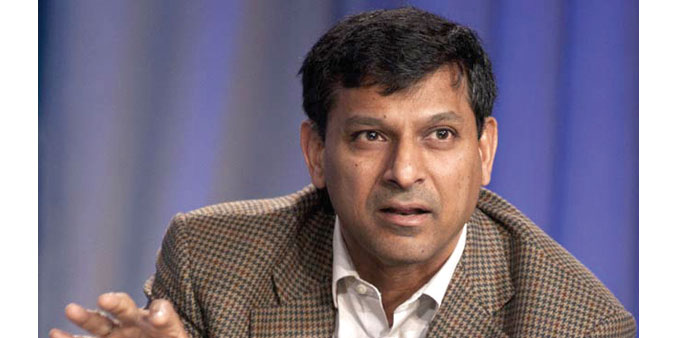Rajan: Urging banks to maintain management discipline in return for a $3.1bn asset injection this fiscal year.
Bloomberg
Singapore
Ratings companies say the disciplinary orders India has started to slap on state banks aren’t a sign the lenders are on the road to failure. Some investors would rather avoid the risk amid the worst bad loans since 2002.
The Reserve Bank of India (RBI) initiated “prompt corrective action” against Indian Overseas Bank this week, which could limit the Chennai-based lender’s ability to pay bonuses or buy assets. The framework was implemented in 2002, and updated in May last year. The RBI issued a warning of impending curbs against United Bank of India in February 2014.
Prime Minister Narendra Modi and RBI governor Raghuram Rajan have adopted a tough-love approach to state banks, insisting on management discipline in return for a Rs200,000mn ($3.1bn) asset injection this fiscal year. Some fund managers say they’re still favouring private banks or mortgage lenders as the industry’s bonds rally on signs growth in Asia’s third-largest economy is starting to pick up as RBI cuts interest rates.
The central bank “has realised that asset quality is a big problem and it’ll be getting worse before it gets any better,” Kunaey Garg, a Mumbai-based financial institutions analyst at India Ratings and Research Pvt, said. “Most of the public sector bank exposure is with the infrastructure sector and that’s not faring too well. Once on-the-ground realities improve, the quality of bank balance sheets” should get better.
State-owned banks recorded the worst capital adequacy ratios among all financial institutions as at the end of March, according to a semi-annual financial stability report published by the RBI in June. On average, 13.5% of their loans were classified as stressed, the RBI said.
State-owned banks are “under capitalised and have a lot of nonperforming loans on their balance sheets,” said Thomas Drissner, a Singapore-based investment manager at Aberdeen Asset Management, which managed some $484bn as of June 30. “There are questions about how proactive they are provisioning for those. And purely the fact they’re reliant on the sovereign to keep the minimum capital ratios isn’t a good sign.”
Drissner said he takes a positive view about some of India’s private institutions. William Danoff, the money manager who oversees Fidelity Investments Ltd’s $103bn Contrafund, earlier this week recommended buying shares of Indian housing finance company HDFC Bank, predicting private-sector banks will benefit from economic growth more than their state-run competitors.
The RBI looks at three main criteria when considering corrective action. A bank’s return on assets must remain above 0.25%, its net nonperforming assets must be less than 10% and its capital adequacy ratio must be over 9%. It relaxed the action it took against United Bank in March, reversing an order that made it more difficult for the lender to make advances and participate in restructuring proposals.
“Indian Overseas Bank’s return on assets has been under the 0.25% threshold for the past four quarters and seemingly, authorities are only taking action now,” Swee Ching Lim, a Singapore-based credit analyst at Western Asset Management Co, said. “Perhaps the runway that’s being given to these banks could be longer than we think.”
Indian Overseas Bank’s 2018 dollar bonds have returned 3.5% this year, prices compiled by Bloomberg show. US currency notes of Indian lenders more broadly are up by the same amount since December 31, the third-best performing in a Bank of America Merrill Lynch index after energy and capital goods debentures. HDFC Bank’s $595mn of 3% securities due 2016 have gained 2% in 2015.
The cost to insure State Bank of India’s debt against nonpayment using credit-default swaps has fallen 9 basis points since 29 September, when benchmark rates were unexpectedly cut to 6.75% from 7.25%. The contracts are considered a proxy for the sovereign. India’s rupee has strengthened 1.1%.
Standard and Poor’s said in a statement October 6 that the corrective action would have no rating impact on Indian Overseas Bank. The action also won’t have any material impact on the bank’s performance, the lender said in an exchange filing at the time.

